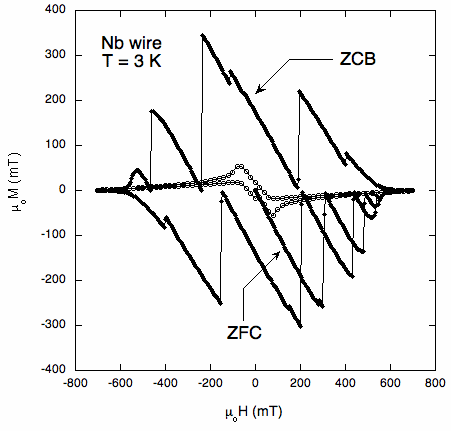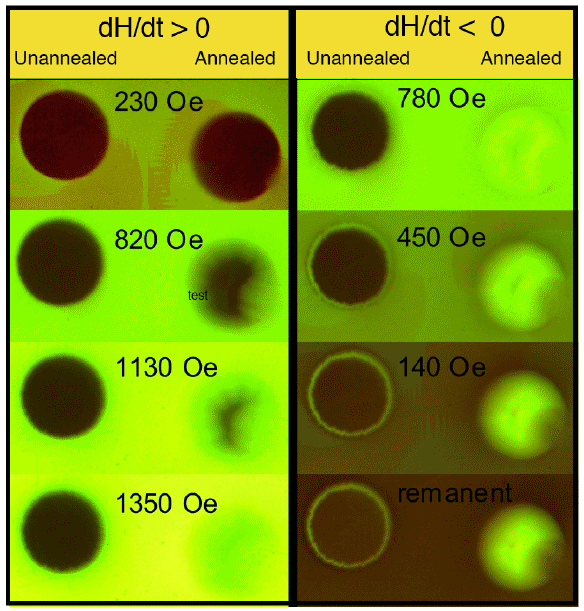
Here we made a study of the magnetic response of Type-II superconductivity in the extreme pinning limit, where screening currents within an order of magnitude of the Ginzburg-Landau depairing critical current density develop upon the application of a magnetic field. We show that this "super-hard'' limit is realized in highly disordered, cold drawn, Nb wire whose magnetization response is characterized by a cascade of Meissner-like phases, each terminated by a catastrophic collapse of the magnetization, as shown on the left. The filled symbols are unannealed and the open correspond to the same sample after annealing at ~1000C. Clearly the pinning potentials in this system are purely morphological in nature.
The collapse events are due to a well known thermomagnetic instability in which the breakaway of a local patch of vorticity causes heating which ultimately results in an avalanche. As one can see from the plot extremely high magnetization energies can be obtained at the point of collapse. We believe that the pinning forces in the system are, in fact, near the theoretical maximum.

In the images on the left we show magneto-optical measurements of flux penetration in a Nb wire segment taken by Ruslan Prozorov. Dark corresponds to low field. The unannealed MO data was taken along the ZFC branch in the above plot. Note that only a narrow ring of flux is able to penetrate unannealed sample but there is extensive penetration in the annealed sample. Using these images we can obtain direct measurement of the flux penetration depth from which we can determine the critical depinning current density.
Read more: